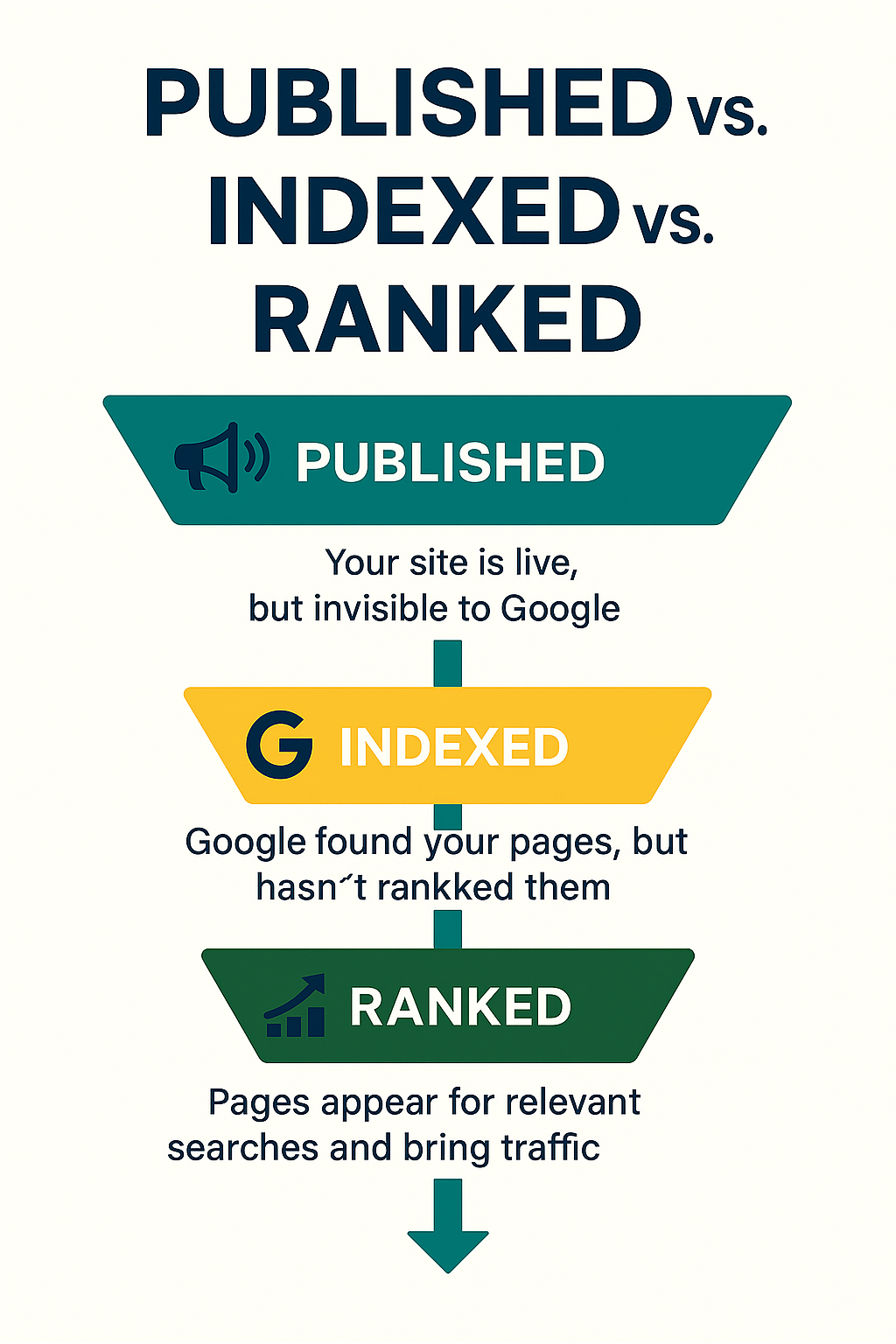You’ve hit “Publish.” Your website is live.
The design is sharp. The copy’s clean. It feels modern, fast, and responsive.
Now what?
Most businesses assume that launch = done. But in reality, the real work starts after the site goes live.
At 3MY, we’ve helped dozens of clients go beyond the launch phase — turning static websites into living, growing business systems. Here’s what actually happens next.
1. Search Indexing & Performance Monitoring
A live website isn’t automatically visible to Google. Search engines need to crawl, index, and validate your pages.

What to do post-launch:Infographic: Published doesn’t mean Indexed. Indexed doesn’t mean Ranked.
- Submit your sitemap to Google Search Console
- Monitor indexing status, crawl errors, and robots.txt issues
- Track Core Web Vitals and mobile usability regularly
Why it matters:
If your site isn’t indexed correctly, it won’t rank — no matter how beautiful it looks.
Insert visual: Infographic comparing “Published vs. Indexed vs. Ranked”
2. SEO & Content Activation
On-page SEO is just the beginning. Search visibility grows from continuous optimization and strategic content.
Next steps:
- Launch a keyword-driven blog content plan
- Expand category or service pages with semantic terms
- Improve titles, meta descriptions, and internal linking based on performance data
Why it matters:
Consistent content is the difference between a static website and one that compounds organic traffic over time.
3. Analytics & Conversion Tracking
Traffic is meaningless if it doesn’t convert — and conversions are meaningless if you’re not tracking them.
Set up:
- Google Analytics 4 + Tag Manager
- Defined goals: leads, calls, forms, scroll depth, events
- Funnels and user flows to identify friction points
Why it matters:
Without a measurement system, you’re flying blind.
4. UX & CRO (Conversion Rate Optimization)
A beautiful site is wasted if it doesn’t guide users toward action.
Improve with:
- Strategic CTAs (calls to action) across key pages
- Lead magnets or offers aligned to user intent
- A/B tests on headlines, layouts, and navigation
- Mobile-first usability tuning
Why it matters:
Your site isn’t just a brand asset — it’s a sales funnel.
5. Maintenance, Speed & Security
Websites are like machines — if you don’t maintain them, they degrade.
Ongoing tasks:
- Monthly updates for CMS, plugins, and themes
- Security scans, vulnerability patches
- Load speed testing (e.g., Google PageSpeed, GTmetrix)
- Uptime monitoring and error alerting
Why it matters:
A slow or broken site doesn’t just frustrate users — it kills SEO and revenue.
6. Real-User Feedback & Iteration
The best insights don’t come from assumptions — they come from users.
How to collect insights:
- Heatmaps (Hotjar, Microsoft Clarity)
- User recordings and rage click tracking
- Client and lead interviews
- Live chat logs and abandonment patterns
Why it matters:
Continuous micro-adjustments based on real user behavior can double or triple your results over time.
Insert visual: Simple diagram: “Launch → Data → Learn → Improve → Grow”
The 3MY Post-Launch Framework
When we launch a website, we don’t walk away.
We help clients turn a static site into a revenue-generating system through:
| Focus Area | What We Do |
|---|---|
| SEO Signals | Monitor rankings, sitemap health, page indexing |
| Content Growth | Build content calendars, blog plans, semantic expansion |
| UX Improvements | Track user friction, test layouts, refine CTAs |
| Tech Support | Set up backups, security patches, plugin updates |
| Reporting | Deliver monthly insights, recommend next steps |
Not Sure What to Do After Launch?
Book a Website Review Session
We’ll audit your current site setup, look at your data, and outline a practical roadmap for improving performance — no fluff, just clarity.










